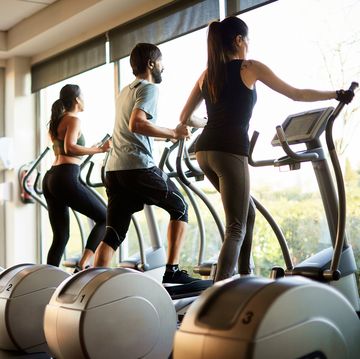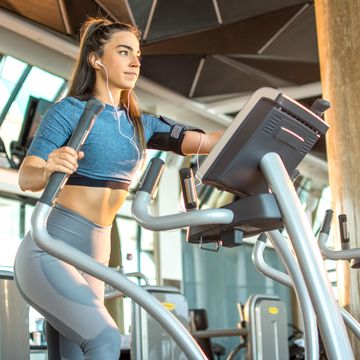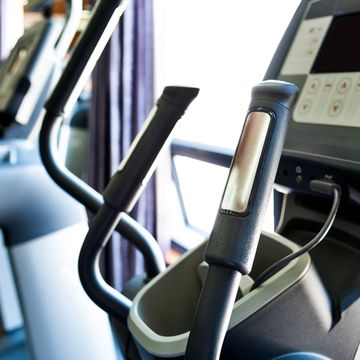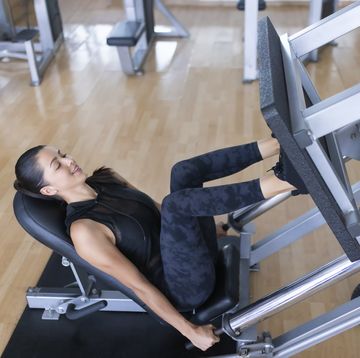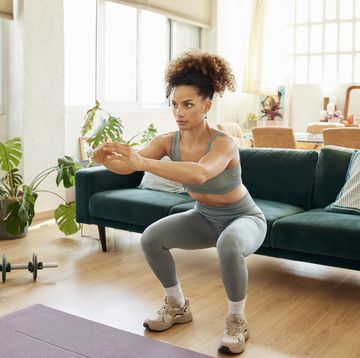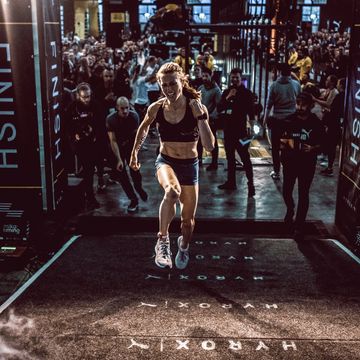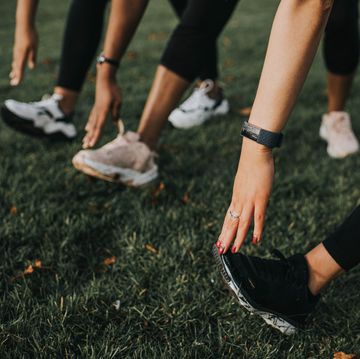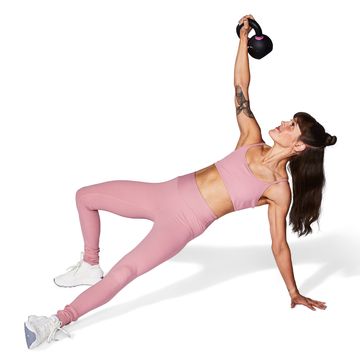Incorporating balance exercises into your strength training routine can help improve your stability, reduce the risk of injuries and enhance your running performance.
From single-leg exercises to resistance band exercises and dynamic lunges, these are the best PT instructor-approved balance exercises - plus we explain how they can improve your overall running efficiency.
Why do runners need good balance?
‘Running is a form of dynamic balance where your body is required to evenly distribute bodyweight from one leg to the other as you are moving forwards,’ explains running coach and manager of Instate London gym, Anna Ward.
‘Having good dynamic balance is essential in your body’s ability to react to sudden changes in your balance such as uneven surfaces or having to change direction or speed.’
‘Good balance is essential for runners because it contributes to overall stability and efficiency,’ adds Mitch Raynsford, strength and conditioning coach at P3RFORM. ‘When running, each stride involves a moment of single-leg support, making balance crucial for preventing injuries and maintaining proper form. A small asymmetry between limbs or lack of balance may seem minuscule, but repeatedly landing with this weakness can accumulate and lead to a higher risk of ankle sprains, knee issues, and other common running-related injuries.’
What’s the difference between balance and stability?
‘Balance and stability training come hand in hand as they both work to strengthen the core,’ says Ward. ‘Having solid core strength improves coordination, posture, overall strength, and athletic skill. All of these are important for runners. Both balance and stability are essential for preventing injury and stopping you from following as you drive forward, propelling your body weight from one leg to the other.’
Why is balance something so many people struggle with?
How many people balance on one leg or play hopscotch after the age of 10? asks Raynsford. ‘There is your answer, people struggle because they simply don’t practice it,’ he says.
‘Several factors contribute to challenges in maintaining good balance. Modern lifestyles often involve prolonged periods of sitting, leading to weakened stabiliser muscles.
Additionally, over-reliance on footwear with cushioning and support can limit sensory feedback from the feet, affecting balance perception (go barefoot). Muscle imbalances, injury history, and lack of regular balance-specific training also contribute to struggles with balance. However, consistent practice of balance exercises and functional movements can gradually improve stability over time.’
There are some medical conditions that impact balance, adds Ward, and your age ‘as you get older motor skills deteriorate’. But if you’re lacking in balance, then the best way to improve is to add appropriate strength training exercises. ‘Some people are more coordinated than others and have greater stability due to core strength, but putting in the time to work on these weaknesses will inevitably lead to improved overall balance and stability,’ she says.
What are the best exercises to improve your balance?
1. Single-leg exercises
When it comes to strength training most people don’t usually think about the need for unilateral exercises and think a squat will simply work both sides, Raynsford explains. ‘But if you have a dominant limb or a hip shift, for example, the strong side can overpower and do most of the work subconsciously.’ Ward says we do single-leg work to ‘help improve the muscle imbalances that may vary from leg to leg, in turn making our weight better distributed when we are running.’
Ranysford suggests incorporating single-leg exercises like single-leg squats, lunges, and step-ups. ‘These movements challenge your balance and activate stabiliser muscles,’ he says.
Try this: Single-leg deadlift
This single-leg hinge movement involves stabilising the planted leg and as you hinge, extending the elevated leg back. ‘It works the core muscles as well as the standing leg, which helps to improve balance,’ says Ward.
- Either without weights or holding on to two dumbells – one in each hand – put your weight into one foot and lift the other leg a few inches off the floor.
- Hinge forward at your hip, bringing the weights towards the ground.
- Keep your elevated leg straight.
- Aim for 10 reps on one leg without letting your foot touch the ground, then go again on the other side.
2. Proprioceptive training
You don’t need to use Bosu-balls or wonky surfaces for this, simply standing on one leg can be challenging enough, says Raynsford.
Front foot raised reverse lunges are great for helping to strengthen imbalances but also target stabilisers in the hip which improves your overall balance, adds Ward. ‘Stepping onto a lower surface challenges our proprioception, helping to improve balance and coordination.’
Try this: Compass reaches
- Stand on one foot and reach the opposite foot in every major direction according to a compass: North, East, South and West as well as Northeast, Southeast, Southwest and Northwest.
- When reaching the foot in each direction, keep the foot as close to the ground as possible and return to the centre position after each reach.
- Reach in all 8 directions 3-5 times with each foot.
3. Dynamic movements
‘Practice dynamic movements that mimic running mechanics, such as single-leg hops or lateral movements,’ Raynsford suggests. ‘These exercises help simulate the challenges faced during running. These should be in your running warm-up anyway and a frequent part of your training plan.’
Try this: Lateral hops moving forwards
‘As a plyometric exercise, lateral jumps require rapid, explosive movement on one leg,’ says Ward. ‘This will improve your ability to change direction quickly and maintain balance during dynamic movement.’
- Start in a half-squat position.
- Push off your left foot and hop to the right as far as possible before landing with all of your weight on your right foot.
- Keep your left foot lifted and hold your position for a second, then spring off your right foot to the side again, jumping back to the left.
- Aim to repeat this movement 10 times to complete a set.
4. Core strengthening
‘A strong core enhances stability and balance, not just the abs for the beach,’ says Raynsford, who suggests focusing on trunk stability work with exercises like side planks, dead bugs and bear crawls, as these can help challenge anti-rotation and understand how to correctly brace your core.
Try this: Pallof presses
The pallof press is great for challenging your core – as it requires your core to resist twisting. Use either a cable machine at a gym or a resistance band.
- Stand perpendicular to the cable machine or resistance band.
- With feet hip-width apart, and knees slightly bent, rotate your torso toward the machine or anchor point and grasp the machine's handle or end of the resistance band with both hands.
- Use your core to rotate your torso away from the machine, facing forward with your hands directly in front of your chest. This is your starting position.
- Extend your arms out away from your body, resisting the urge to twist your torso towards the machine or anchor point.
- Slowly return to starting position. Hands should remain at chest height throughout the movement. Repeat for four sets of 10.





